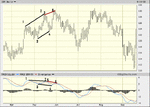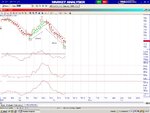I just recently lost a lot of money on the symbol “ICE and BIDU” playing options.
I know a lot of indicators are lagers, but being new to getting in and out of the market I pay attention to Candlesticks and volume. Are there any good indicator settings for MACD or others indicators that could help.
And what are the best indicators and settings to use in swing and day trading.
I also pay attention to 15 and 30 and 240 minute charts. Is there any good silver bullets.
Thank you
Mr. Steve
I know a lot of indicators are lagers, but being new to getting in and out of the market I pay attention to Candlesticks and volume. Are there any good indicator settings for MACD or others indicators that could help.
And what are the best indicators and settings to use in swing and day trading.
I also pay attention to 15 and 30 and 240 minute charts. Is there any good silver bullets.
Thank you
Mr. Steve


